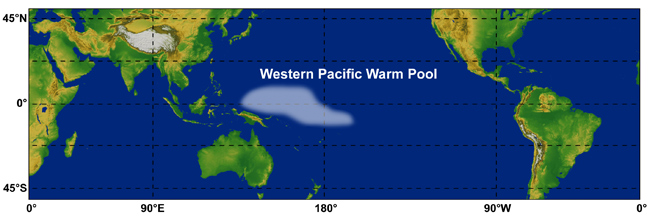
A Gaialike mechanism may be protecting some coral reefs by preventing sea surface temperatures (SSTs) from rising past a certain threshold. The study from the National Center for Atmospheric Research in Boulder, Colorado, and the Australian Institute of Marine Science finds evidence of an ocean thermostat regulating SSTs in an extremely biologically diverse region of the western Pacific.
Warming sea temperatures in much of the tropical world have led to ocean-wide epidemics of fatal or near-fatal coral bleaching. Bleaching has become increasingly widespread in recent decades, with SSTs in tropical, coral-rich waters increasing 0.3-0.4 degrees C (0.5-0.7 degrees F) over the past two to three decades, and spiking higher.
But between 1980 and 2005, only four episodes of bleaching occurred on reefs in the Western Pacific Warm Pool—a lower rate than any other reef region. SSTs in the warm pool naturally average 29 degrees C (84 degrees F), close to the proposed thermostat limit, and have warmed up only half as much cooler areas of the oceans.
Researchers speculate on several processes that might regulate these temperatures. As surface waters warm, more water evaporates, increasing cloud cover and winds that cool the surface. And/or, in some areas, warming alters ocean currents, bringing in cooler waters. Plus, evaporation removes heat. So these reefs already adapted to hot water might be more protected from warming than reefs that are not… Whatever it is, turns out to be, it might well mean salvation for reefs in the coming decades.
Julia Whitty is Mother Jones’ environmental correspondent and 2008 winner of the John Burroughs Medal Award. You can read from her new book, The Fragile Edge, and other writings, here.
















